A Dutch oven is a must-have for many kitchens. It’s so versatile that I’ve already used mine for making stews, soups, and even for deep frying.
It’s also integral to many recipes. In fact, many sourdough recipes often mention the need for Dutch ovens because of their moisture regulating tight fitting lid. However, not everyone has access to this often pricey piece of cookware. With prices of high-quality Dutch ovens starting at $300, it’s not exactly a “buy-in-a-heartbeat” kind of thing.
This article will explore various Dutch oven substitutes, each with its unique features and advantages, to help you achieve similar culinary results without missing a beat.
Also read: A Complete Guide to Dutch Ovens: Size Chart, FAQs, and More!
15 Dutch Oven Alternatives For Cooking and Baking
If your recipe calls for a Dutch oven but you don’t have one, you can use the following as substitutes.
1. Slow Cooker
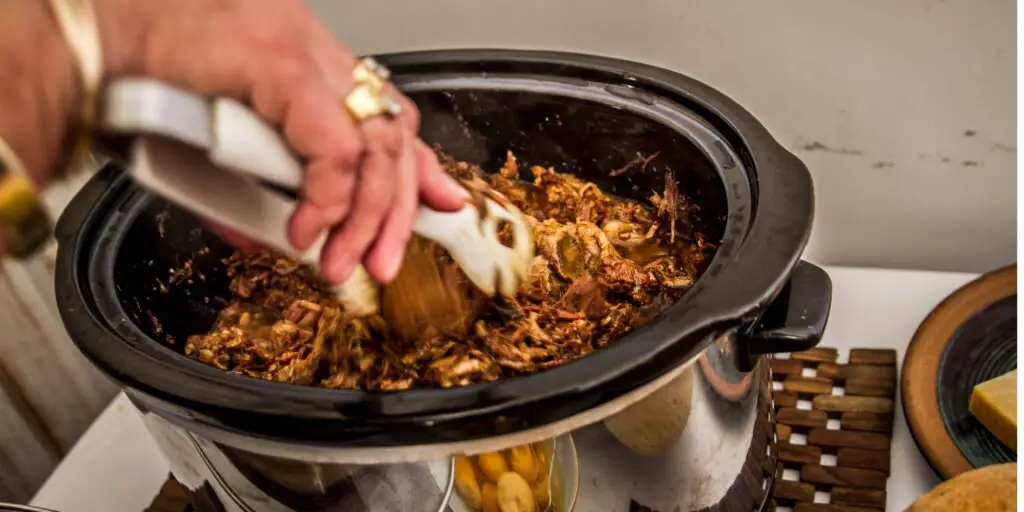
A slow cooker, also known as a Crock-Pot, is a popular kitchen appliance designed to cook food at a low temperature over an extended period.
One of the main advantages of a slow cooker is its convenience. You can prepare your ingredients in the morning, set the slow cooker to the desired temperature, and let it work its magic throughout the day.
However, there are some drawbacks to consider. Slow cookers are typically designed for low and slow cooking, meaning they cannot reach the high temperatures necessary for some Dutch oven recipes, such as baking bread or searing meat.
The main difference for me is the flavor. A slow cooker won’t allow you to sear your vegetables, meat, and aromatics before stewing them in liquid. Imagine the loss of flavor from the lack of caramelization and the Maillard reaction!
Nevertheless, I think a slow cooker sufficiently fills the slow cooking role of a Dutch oven. You can’t use it for baking, though.
2. Multicooker
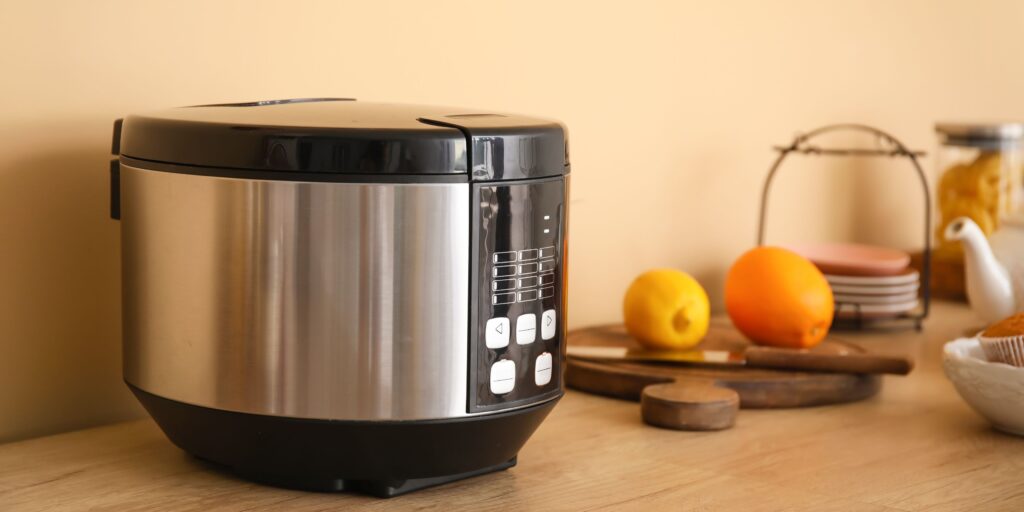
A multicooker is a versatile kitchen appliance that combines the functions of several cooking devices into one. It can act as a pressure cooker, slow cooker, rice cooker, steamer, sauté pan, and even a yogurt maker. This multifunctionality makes the multicooker an excellent alternative to a Dutch oven, as it can handle a wide range of cooking tasks with ease.
Compared to a slow cooker, a multicooker can reach higher temperatures, hence you can sear your ingredients inside it before boiling them. It can bake, but it probably won’t excel at it. Many multicookers have a bake function of some sort, but it’s not as flexible as an oven. You may have to tinker with the settings and turning it on and off and on again to manipulate the time and temperature.
3. Pressure Cooker
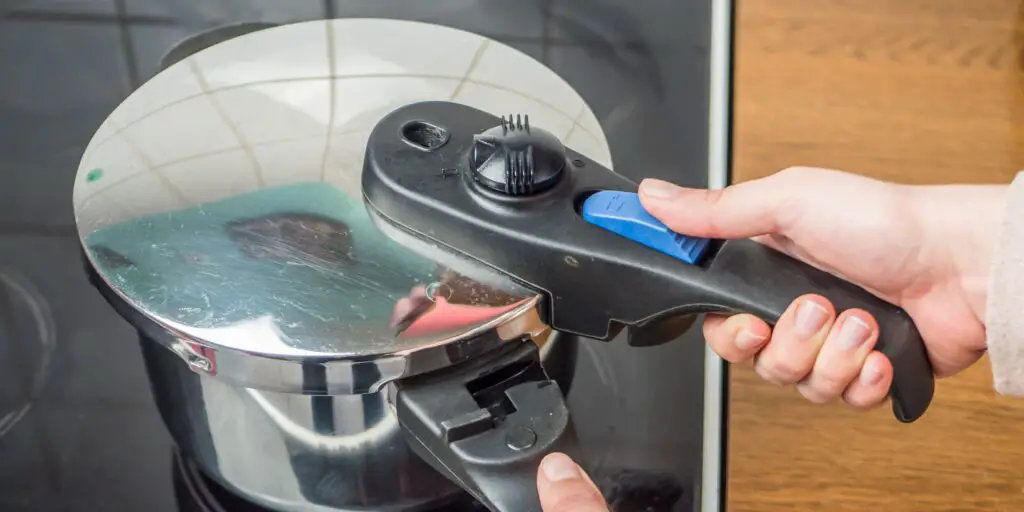
A pressure cooker is a kitchen appliance designed to cook food quickly under high pressure. It works by trapping steam inside a sealed pot, which increases the internal pressure and raises the boiling point of water. This allows food to cook much faster than traditional methods while retaining moisture and flavor.
One of the primary advantages of a pressure cooker is its speed. Dishes that typically take hours to cook can be prepared in a fraction of the time, which is perfect for those with busy schedules. The pressure cooker is also energy-efficient, using less electricity or gas compared to prolonged oven or stovetop cooking. You can also sear your ingredients inside a pressure cooker before sealing them in. Additionally, the high-pressure environment helps to tenderize tough cuts of meat and infuse flavors more effectively.
However, there are some limitations to consider. The high-pressure cooking method may not be suitable for delicate foods, as they can become overcooked or mushy. Furthermore, the pressure cooker requires careful handling and monitoring, especially during the release of steam, which can be intimidating for some users. Despite these challenges, a pressure cooker is an excellent alternative for achieving similar results to a Dutch oven in a much shorter time frame.
Oh, and obligatory “you can’t bake with this” here.
4. Rice Cooker
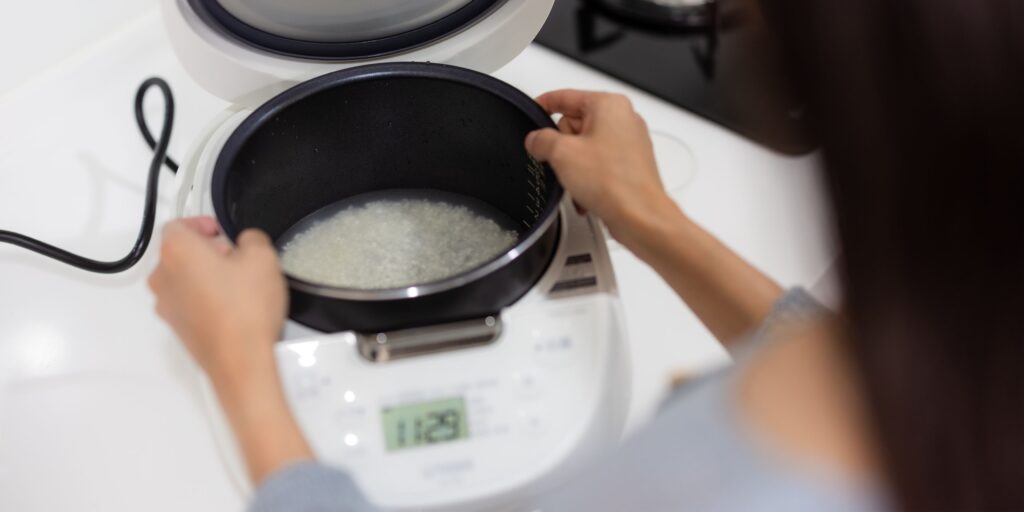
A rice cooker is a specialized kitchen appliance designed primarily for cooking rice, but it can also be used for other dishes such as steaming vegetables, cooking grains, and even preparing stews.
While it may not offer the same versatility as a Dutch oven, a rice cooker can still be a useful alternative for certain recipes. Consider it a cheaper and more rudimentary Multicooker.
However, there are some limitations to keep in mind. A rice cooker may not reach the high temperatures necessary for some Dutch oven recipes, and its cooking capacity may be limited compared to larger Dutch ovens. It can’t bake, and the aluminum (or tin) pot cannot go inside the oven either. Despite these limitations, a rice cooker can still be a handy and efficient alternative for preparing a variety of meals.
5. Stockpot
A stockpot is a large, deep pot with a flat bottom, straight sides, and a lid, typically used for making stocks, soups, and large batches of food. It is usually made of stainless steel, aluminum, or other conductive materials, which are all considerable lighter than cast iron. While it may not have the same heat retention properties as a Dutch oven, a stockpot can still be a practical alternative for many recipes.
One of the main advantages of a stockpot is its size. Its large capacity makes it ideal for cooking in bulk, which is perfect for meal prepping or feeding a crowd. The stockpot’s tall sides also help to minimize evaporation, ensuring that soups and stews remain flavorful and concentrated. Additionally, stockpots are generally more affordable and widely available than Dutch ovens.
However, there are some drawbacks to consider. Stockpots are not designed for oven use, which limits their versatility compared to Dutch ovens. They also lack the heavy, tight-fitting lid that is characteristic of Dutch ovens, which can affect the moisture retention and flavor development of certain dishes. Despite these limitations, a stockpot remains a valuable and versatile tool in the kitchen, capable of handling a wide range of cooking tasks.
6. Clay Pot
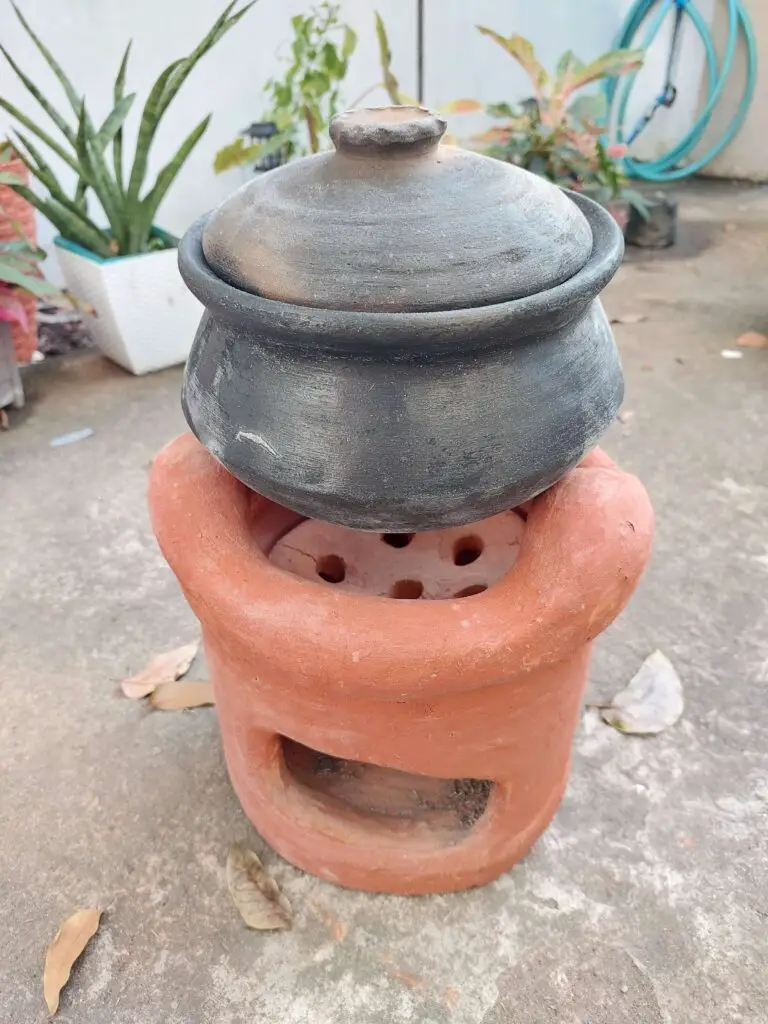
A clay pot is a traditional cooking vessel made from unglazed or glazed clay. It is used in various cuisines around the world, particularly in Asian, Middle Eastern, and Mediterranean cooking. The porous nature of the clay allows for slow, even cooking, making it a good alternative to a Dutch oven for braising, stewing, and baking.
For funsies, my wife and I bought a traditional Filipino clay pot (palayok) with a matching clay stove (kalan) for our dirty kitchen. We bought it because we don’t like using our gas range for hours at a time to make stews. Hence, most of our slow cooking are done with these tools. And for the most part, I prefer it over a Dutch oven.
One of the key benefits of a clay pot is its ability to enhance the flavors of the food. As the pot heats up, it releases steam that helps to infuse the ingredients with rich, earthy flavors. The clay pot also retains moisture well, preventing dishes from drying out during long cooking times. Additionally, the natural material of the pot can add a unique taste to the food that is difficult to replicate with other cookware.
Mind you, it does not have a tight fitting lid, so it does not “self baste” like a Dutch oven. But it does make up for it with the infusion of smoky flavors, especially if you cook over coals.
However, there are some considerations to keep in mind. Clay pots require special care and handling, as they are more fragile than metal cookware. They must be soaked in water before use to prevent cracking and should be heated gradually to avoid thermal shock. Furthermore, clay pots are not suitable for high-temperature cooking or quick-cooking methods.
Oh, and they don’t get quite big as well. The biggest ones are only around 2.5 quarts, so you may have difficulties in fitting whole chickens here.
7. Roasting Pan (with Aluminum Foil)
A roasting pan is a large, rectangular pan with low sides, typically used for roasting meats and vegetables. It is usually made of stainless steel, aluminum, or enameled cast iron. When combined with aluminum foil, a roasting pan can serve as an effective alternative to a Dutch oven, particularly for oven-based recipes.
The main advantage of a roasting pan is its ability to accommodate large cuts of meat or whole poultry, making it ideal for holiday roasts and family dinners. The low sides of the pan promote even browning and crisping, while the aluminum foil can be used to cover the food, trapping moisture and heat for more tender results. Roasting pans are also versatile, as they can be used for baking, broiling, and even stovetop cooking.
However, there are some limitations to consider. Roasting pans are not designed for stovetop use, which can restrict their versatility compared to Dutch ovens. Additionally, the lack of a heavy, tight-fitting lid may result in less moisture retention, affecting the texture and flavor of certain dishes. Despite these drawbacks, a roasting pan with aluminum foil remains a practical and accessible alternative for achieving similar results to a Dutch oven in the oven.
8. Cast Iron Skillet (with Lid)

Chances are, you already know what a cast iron skillet is. Since they’re made with the same base material, they have similar heat distribution and retention characteristics. And paired with a cast iron lid, a cast iron skillet can do most of the same things as a Dutch oven.
However, there are some drawbacks to consider. A cast iron skillet may not provide the same depth as a Dutch oven, which can limit its capacity for large-batch cooking or deep frying. The lid may also not be high enough to accommodate bread baking – but it can be used for baking nonetheless.
9. Deep Cast Iron Skillet (with Lid)
A deep cast iron skillet, also known as a cast iron frying pan, is similar to a regular cast iron skillet but features higher sides (though not higher than a Dutch oven), making it suitable for a wider range of cooking tasks. When paired with a lid, it can serve as a versatile alternative to a Dutch oven, particularly for recipes that require more depth, such as braises, stews, and deep-frying.
I’d say that apart from the braiser (which will make an appearance later in this list), the deep cast iron skillet is the closest you can get to having a Dutch oven – only without an enamel coating. And because of this, you may not want to cook soups and stews here as they may cause trouble with its seasoning later on.
10. Wok (with Lid)
A wok is a versatile cooking vessel with a rounded bottom and high, sloping sides, traditionally used in Asian cuisine for stir-frying. When paired with a lid, a wok can serve as an effective alternative to a Dutch oven for certain recipes, including steaming, braising, and deep-frying. In fact, it is commonly used for braised Asian meals.
While woks are quite versatile (they can technically be used for baking), there are some limitations to consider.
For one, the rounded bottom of a traditional wok may not be compatible with flat stovetops, requiring a wok ring for stability. Additionally, the high sides may not provide the same depth as a Dutch oven, limiting its capacity for large-batch cooking. Despite these challenges, a wok with a lid remains a versatile and efficient alternative for a wide range of cooking tasks.
11. Braiser
A braiser is essentially a baby Dutch oven. Also known as a braising pan or casserole, is a shallow, wide pan with a heavy lid, designed for braising, roasting, and browning. Typically made from cast iron or enameled cast iron, a braiser offers excellent heat retention and even heat distribution, making it a good alternative to a Dutch oven for certain recipes.
Dutch ovens and braisers are both excellent at slow cooking. They both have heavy lids that help retain moisture, and they are both made with cast iron, which have excellent heat retention. However, the braiser’s shallower design makes it better for evaporation, which is ideal for reducing sauces and achieving a rich, concentrated flavor. I’m not saying that a Dutch oven can’t do that — what I’m saying is that a braiser just does it better.
The shallow depth of a braisers may not be suitable for recipes that require a larger volume, such as soups or large stews — something that Dutch ovens can accommodate without a hitch.
Also read: Braiser vs. Dutch Oven: What’s the Difference (And Which One’s For You?)
12. Casserole Dish
A casserole dish is a large, deep, oven-safe dish typically made from glass, ceramic, or enameled cast iron. It is commonly used for baking and serving casseroles, lasagnas, and other baked dishes. While it may not offer the same versatility as a Dutch oven, a casserole dish can still be a practical alternative for certain recipes.
One of the main benefits of a casserole dish is its ability to distribute heat evenly, ensuring that food cooks uniformly. The dish’s deep sides also provide ample capacity for large-batch cooking, making it ideal for family meals and gatherings.
However, there are some limitations to consider. Casserole dishes are typically not suitable for stovetop use, which can limit their versatility compared to Dutch ovens. They also lack the heavy, tight-fitting lid that is characteristic of Dutch ovens, which can affect the moisture retention and flavor development of certain dishes.
13. Bread Pan
A bread pan, also known as a loaf pan, is a rectangular, deep-sided pan designed for baking bread. While it may not offer the same versatility as a Dutch oven, a bread pan can still be a practical alternative for baking bread and other similar recipes.
However, there are some limitations to consider. Bread pans are not suitable for stovetop use, so slow cooking (at least the traditional way) is out of the picture. You can technically use it for roasting, but if you’re using a bread pan in this manner, it usually indicates that something went very wrong. They also lack the heavy, tight-fitting lid that is characteristic of Dutch ovens, which can affect the moisture retention and flavor development of certain dishes.
14. Bundt Pan (or Tube Pan)
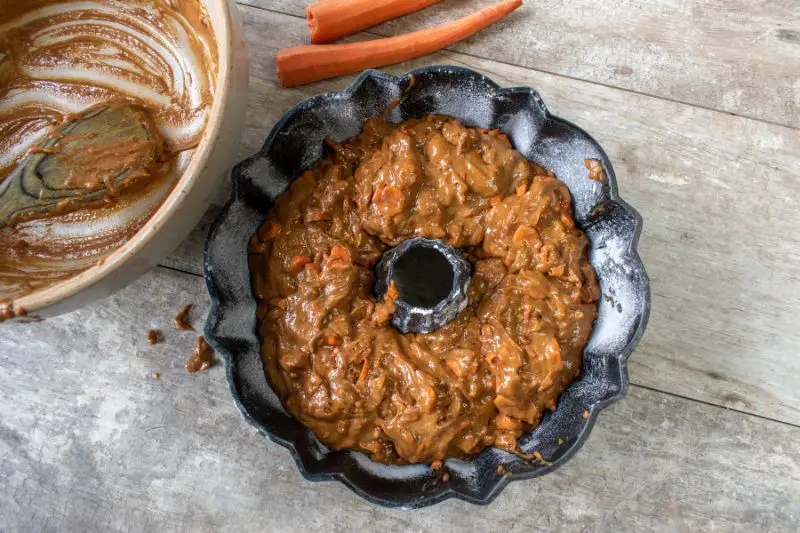
A Bundt pan, or tube pan, is a ring-shaped baking pan with a central tube that ensures even heat distribution. While it is typically used for baking cakes, it can also serve as an alternative to a Dutch oven for certain recipes, such as baked turkeys and chickens.
One of the main benefits of a Bundt pan is its ability to produce evenly baked goods with a decorative shape. The central tube allows for better heat distribution, ensuring that the cake or bread bakes uniformly. Some people also use the central tube to help cook poultry evenly.
However, there are some limitations to consider. Bundt pans are not suitable for stovetop use, which can limit their versatility compared to Dutch ovens. They also lack the heavy, tight-fitting lid that is characteristic of Dutch ovens, which can affect the moisture retention and flavor development of certain dishes.
15. Baking sheet + upside down steel bowl
A baking sheet combined with an upside-down steel bowl can serve as a creative alternative to a Dutch oven for certain baking tasks, such as making sourdough. This setup mimics the enclosed environment of a Dutch oven, trapping steam and heat to create a similar baking environment.
One of the main benefits of this alternative is its accessibility. Most of you already have baking sheets and steel bowls, making this a cost-effective solution.
However, there are some limitations to consider. First off, the steel bowl may not retain heat as effectively as a Dutch oven, which can affect the baking results. You may also not have the appropriate bowl size for what you’re doing. Despite these challenges, a baking sheet combined with an upside-down steel bowl remains a creative and effective alternative for achieving similar results to a Dutch oven in the oven.
Conclusion
Understanding these alternatives and their applications not only broadens your cooking repertoire but also empowers you to make the most of the tools you have at your disposal. While a Dutch oven remains a valuable investment for any kitchen, knowing how to substitute it effectively ensures that your culinary adventures continue unhindered. Embrace these alternatives, experiment with different methods, and discover new ways to bring delicious meals to your table.
To learn more about cooking with cast iron, check out Cult of Cast Iron! Scroll through our blog dedicated to all things cast iron and find helpful tips and tricks to level up your cast iron skills! Discover a whole new world of cooking and spread the Cult of Cast Iron word today!

Miguel is a cast iron enthusiast from Cavite, Philippines. He works in the digital marketing field as a content marketing strategist. On the side, he manages a small online bookstore and tends to his plants.

